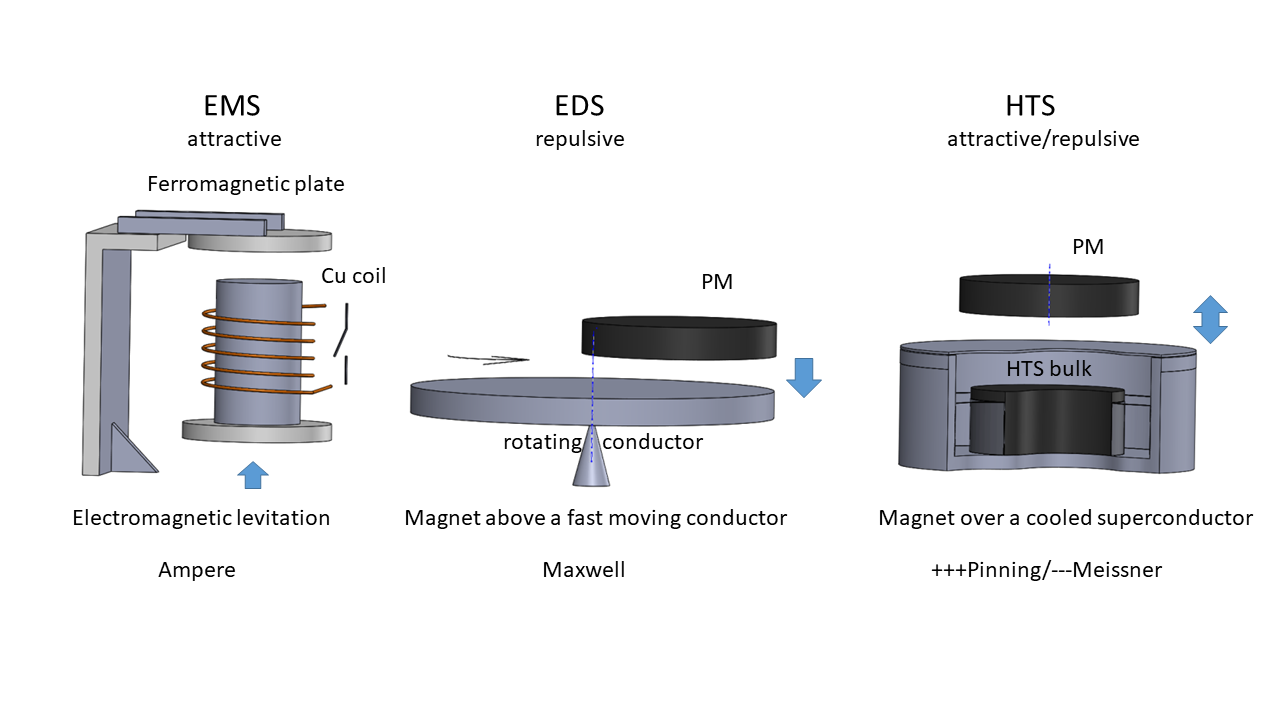AP4-4-INV
Bulk HTS magnetic levitation (maglev)
*Frank N. Werfel1, Uta Floegel-Delor1, Peter Schirrmeister1, Thomas Riedel1, Rene Koenig1, Viktor Kantarbar1, Mirko Liebmann1, Oleksii Vakaliuk1
- Adelwitz Technologiezentrum GmbH (ATZ), Germany1
Magnetic levitation (maglev) is fantastic and attracts wide attention. In contrast to many other physical phenomena today, a floating permanent magnet (PM) above a cooled high-temperature superconductor (HTS) is easy to demonstrate. As a rule, the first observation of self-stabilized PM levitation leaves viewers with a sense of helplessness. In this presentation, we discuss the status of the maglev mechanism’ and how to implement it in a device.
High magnetic fields (> 1 T) can be obtained using HTS thin–film wires, wound coils, or single/multi-domain bulk HTSs. The latter are capable to “copy” any applied external magnet configuration. Over the past 20 years, ATZ has designed and built several hundred levitation systems for use in contactless bearings with speeds above 105 rpm or of ton-load capacity, frictionless moving magnetic trains, and sensitive levitated scientific instrumentation.
A modern society lifestyle demands the transportation of passengers and goods with high capacity and short travel time. Among airplane, rail train, and car transport modes, non-contact and frictionless maglev vehicle is a promising option. The bulk HTS maglev technology is simple and doesn’t need any feedback control in contrast to electromagnetic (EMS) and electrodynamic (EDS) levitation. Moreover, HTS maglev is environmentally friendly and efficient in the necessary cryogenics, since its operation is possible at liquid nitrogen (LN2) temperature. Thus, the bulk HTS maglev transportation is the present subject of our investigation.
In the last 10 years, ATZ developed technology and built vacuum mobile magnetic cryostats mounted under maglev vehicles showing high loads (> 10.5 t) and traveling speeds (> 350 kmh-1). Except for HTSs, a successful application depends on the optimum infrastructure within a robust mechanical system including vacuum cryostat interface, mobile constructions, and reliable cryogenics. We describe techniques for the design, construction, and testing of mobile prototype HTS bulk cryostats for variable train and sled applications.
We also present a new type of high–speed cryostat that operates at low-pressure environment (p=20 mbar) and lasts > 1200 N. This cryostat is also sustainable against acceleration and shocks up to 20 g and speeds above 350 kmh-1. Finally, we summarize the steady progress of bulk HTS maglev transport and compare it to EMS and EDS counterparts from the electromagnetic and economic point of view.
Fig.1 Magnetic levitation concepts
Keywords: magnetic levitation, HTS bulk, EMS, EDS, high-speed transportation, vacuum cryostat
